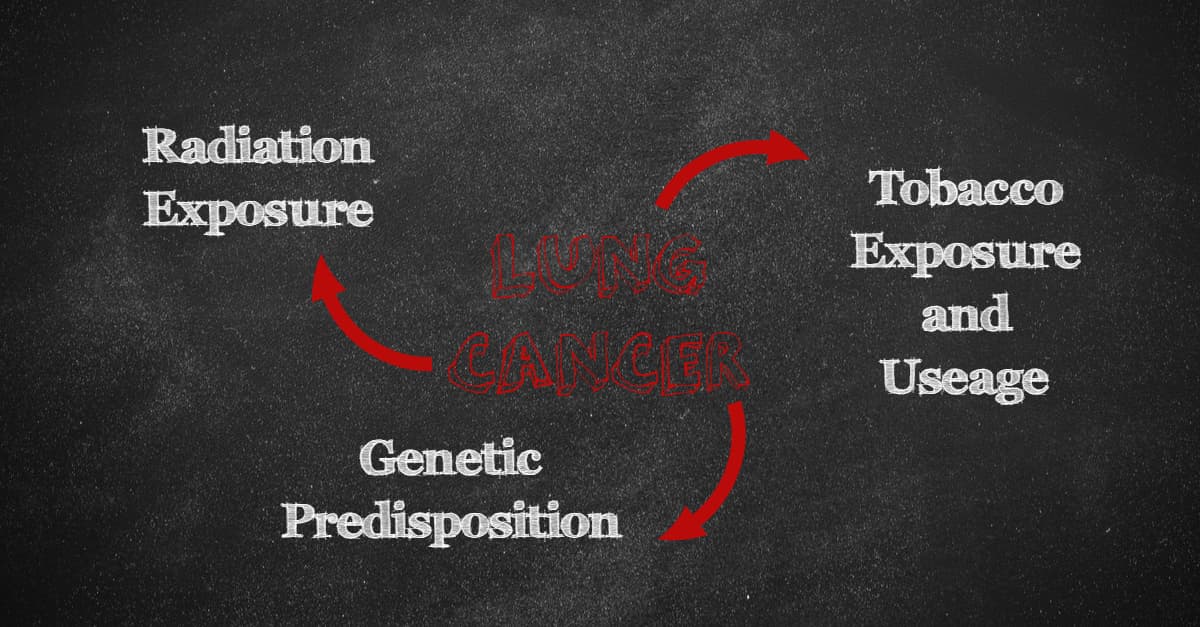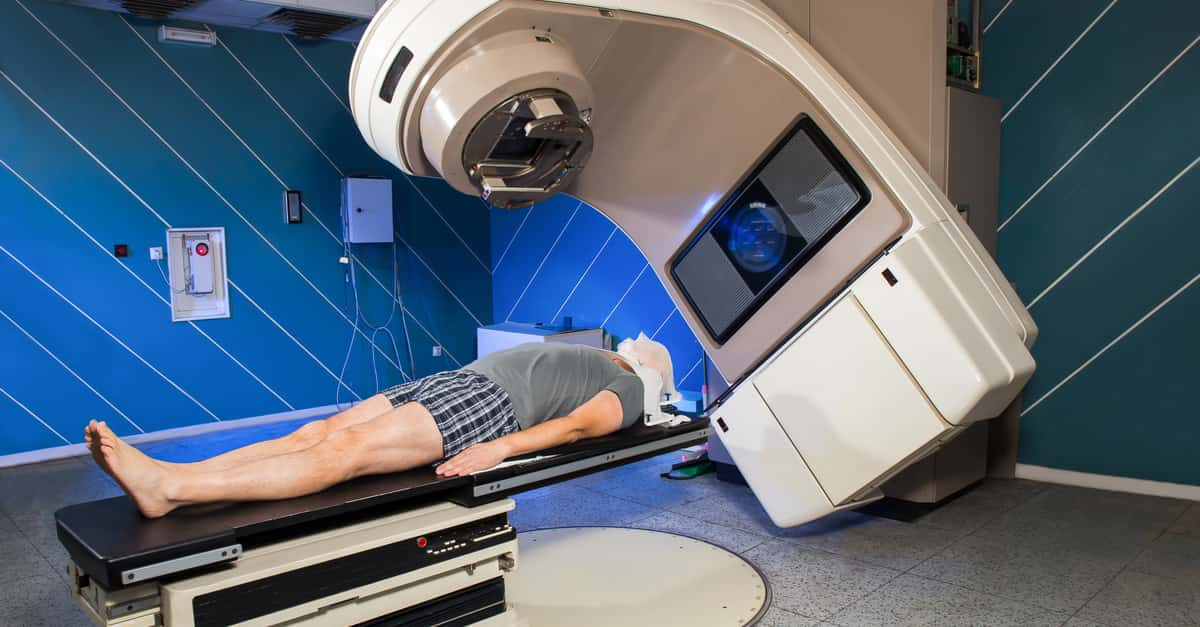The lungs are the organs included in the respiratory system that is in charge of performing the respiratory function, that is, through the respiratory tract, they supply oxygen to the body and get rid of carbon dioxide – a waste product produced by the body’s cells. Lung cancer occurs when there is an overgrowth of malignant cells in this organ. If it is not diagnosed in time, metastasis can occur, in which case the cancerous cells move to other organs of the body.
Causes of Lung Cancer

Most cancers are associated with tobacco use or exposure to environmental smoke. However, some people smoke and never develop cancer and, conversely, people who have lung cancer and have never smoked. In fact, between 10% and 15% of lung cancers occur in people who have never smoked. Other environmental and toxic factors can also favor the appearance of cancer, such as radiation. People who have received radiation therapy for any reason (e.g., because they have had another cancer) are more likely to develop cancer later on. There is also a certain genetic predisposition for some of them, being these cancers more frequent in some families than in others.
Types

It is very important which type of cell is affected, both for the doctor to decide what treatment the patient should follow and to calculate the patient’s chances of surviving the disease.
The lungs are made up of different types of cells, each of which is responsible for different functions. There are two main types of lung cancer – whose name refers to the appearance of their cells – two large groups of tumors that have been classified together because they all have a similar treatment and prognosis. Rarely, some malignant lung cases have features of both major groups; this is mixed large and small cell lung cancer. There are also other less frequent types of lung cancer:
- Microcytic or oat-kernel small cell carcinoma is the most aggressive of all because of its rapid growth and tendency to metastasize. It accounts for 20% of all lung cancers.
- Squamous or epidermoid carcinoma is the most closely related to smoking and the most frequent in male chronic smokers. It accounts for 30% of lung cancers and is relatively slow-growing.
- Adenocarcinoma of the lung is more frequent in women. It is not so closely related to smoking, although it also occurs more often in smokers than in non-smokers. As its distant dissemination is common, its first symptoms are often not the typical pulmonary symptoms. It accounts for 25% of all cancers.
Rare cancers include:
- Bronchial carcinoid tumors, which may be cancerous or non-cancerous.
- Carcinomas of the bronchial glands.
- Lymphomas (cancers of the blood system)
- Mesothelioma (due to asbestos exposure)
Symptoms

This type of cancer, which originates in the structures of the respiratory tree – trachea, bronchi, bronchioles, or alveoli – can manifest itself in various ways depending on the stage at which it is found.
In the early stages: it could cause little symptomatology and be diagnosed by a chance finding. Its symptoms may be confused with respiratory symptoms caused by smoking.
In more advanced stages, the most characteristic signs are:
1. Locoregional symptoms – those derived from the growth of the tumor within the lung, as well as from the invasion of its adjacent tissues. Among the most common symptoms are:
- Cough: it is the most frequent sign of lung cancer and can be dry or productive. It produces expulsion of mucous secretion, infected mucus, or even blood.
- Dyspnea: characterized by the sensation of shortness of breath or difficulty in breathing. This symptom usually appears after significant exertion or with minor physical activities.
- Dysphonia (change in tone of the voice): occurs continuously or intermittently due to an alteration in the mobility of the vocal cords or paralysis and affects the recurrent nerve responsible for their movement.
- Dysphagia (difficulty swallowing): can occur with both solid and liquid foods. This difficulty is due to compression of the esophagus by the existence of ganglions or by the tumor itself.
- Constant chest pain: may increase with deep breathing or coughing.
- Vena cava syndrome: occurs when the main vein of the body is obstructed or partially compressed.
- Respiratory infections repeated over time.
2. Paraneoplastic symptoms – these refer to manifestations that are not directly produced by the tumor or metastasis but are linked to the release of some substance or the activation of the immune system. The most common are:
- Tiredness.
- Loss of appetite or weight loss.
- Tumor hypercalcemia due to an increase in blood calcium levels.
- Nausea.
- Vomiting.
- Constipation.
- Dehydration.
3. Symptoms caused by metastasis:
- Continuous pain in case of bone involvement: mainly in the spine.
- Pain in arms and legs: which may mean that there is an involvement of a nerve originating in the spinal cord.
In some cases, the symptomatology of cancer is generalized and can produce fatigue, fever without a known cause, or headache. However, it is important for it to be taken into account that none of these symptoms is a definitive sign of cancer since they can occur in benign processes such as a case of influenza or pneumonia, for example.
Treatment

The main options are:
Surgery – It continues to be the first treatment or treatment of choice for stages I, II, and some selected stages III. There are three basic types of surgery in the treatment of cancer, depending on the size, location of the tumor, how advanced the cancer is, the patient’s general condition, etc. Segmental or wedge resection removes only a small part of the lung; lobectomy is the removal of an entire lobe of the lung, and pneumonectomy is the removal of an entire lung.
Chemotherapy – The drugs used in chemotherapy (cytotoxic drugs) affect both normal cells and cancer cells. The side effects depend very much on the individual drug and the dose used (amount of drug administered). The side effects most often associated with chemotherapy are nausea and vomiting, diarrhea, hair loss, mouth sores, and fatigue.
Radiotherapy – Like chemotherapy, this treatment also has the disadvantage of affecting normal cells as well as cancerous cells. In addition, the side effects of radiation therapy depend on the part of the body that is treated by the radiation and the dose administered. The most common side effects of radiation therapy are dryness and irritation of the throat, difficulty swallowing food, fatigue, skin changes in the treatment area, and loss of appetite. If the target of radiation therapy is brain metastases from lung cancer, and the head is irradiated, the patient may also experience headaches, fatigue, nausea and vomiting, hair loss, and/or difficulties with memory and thought processes.
